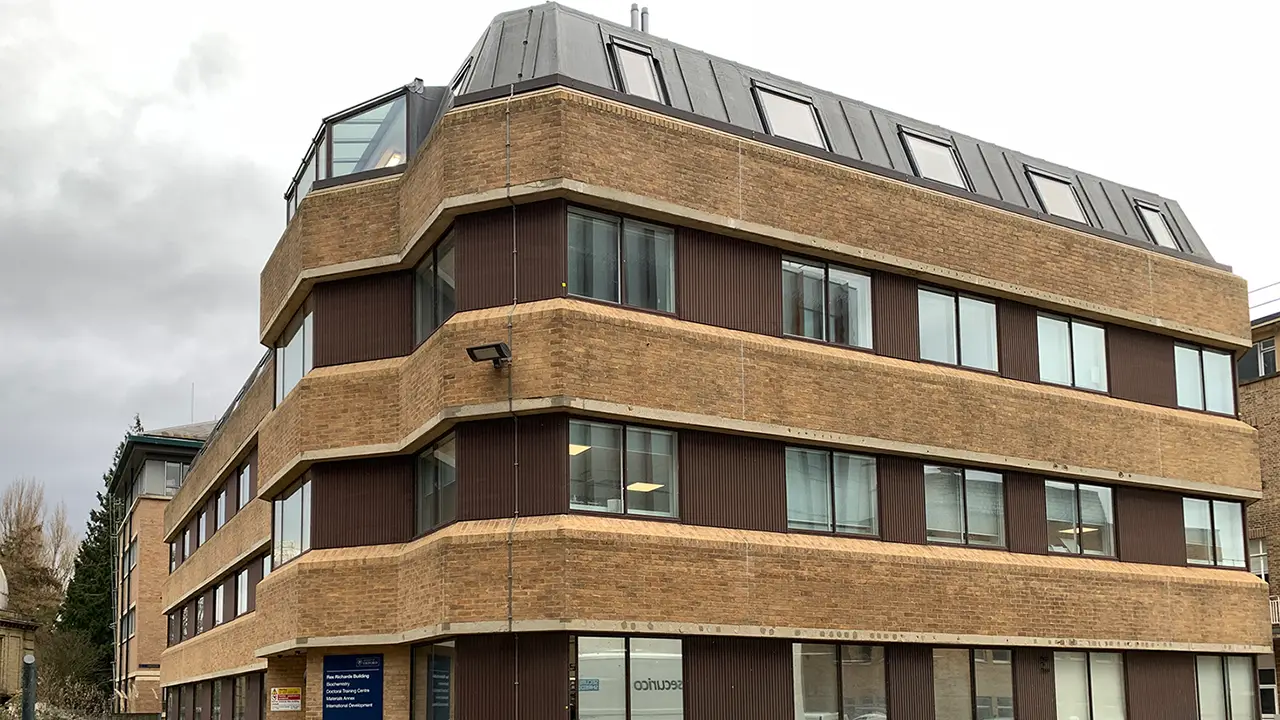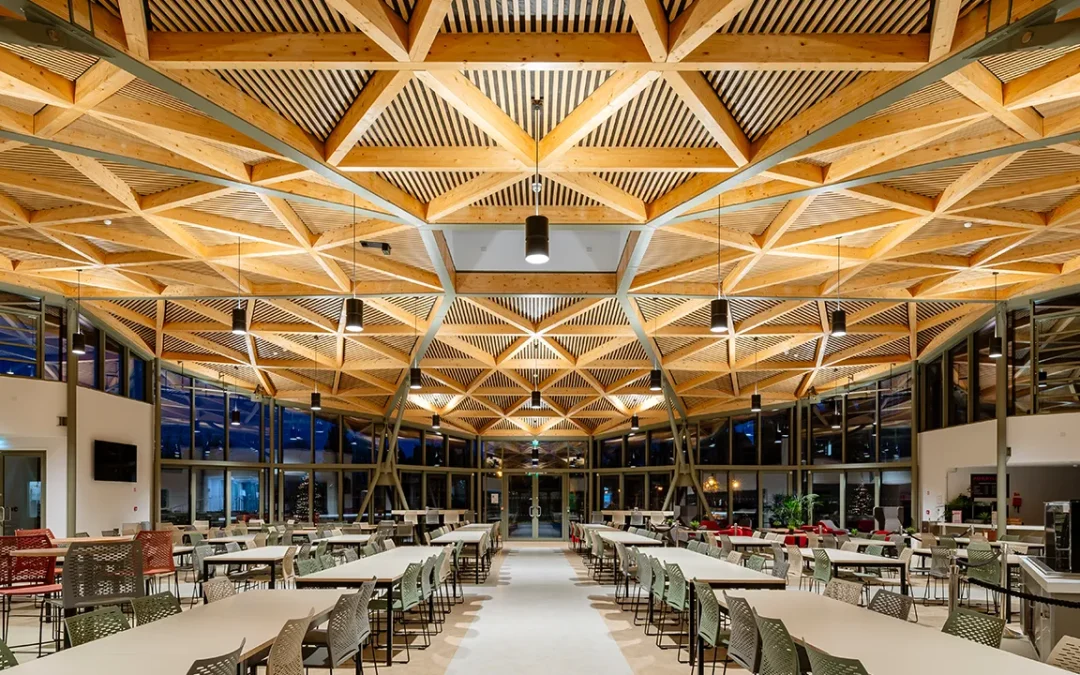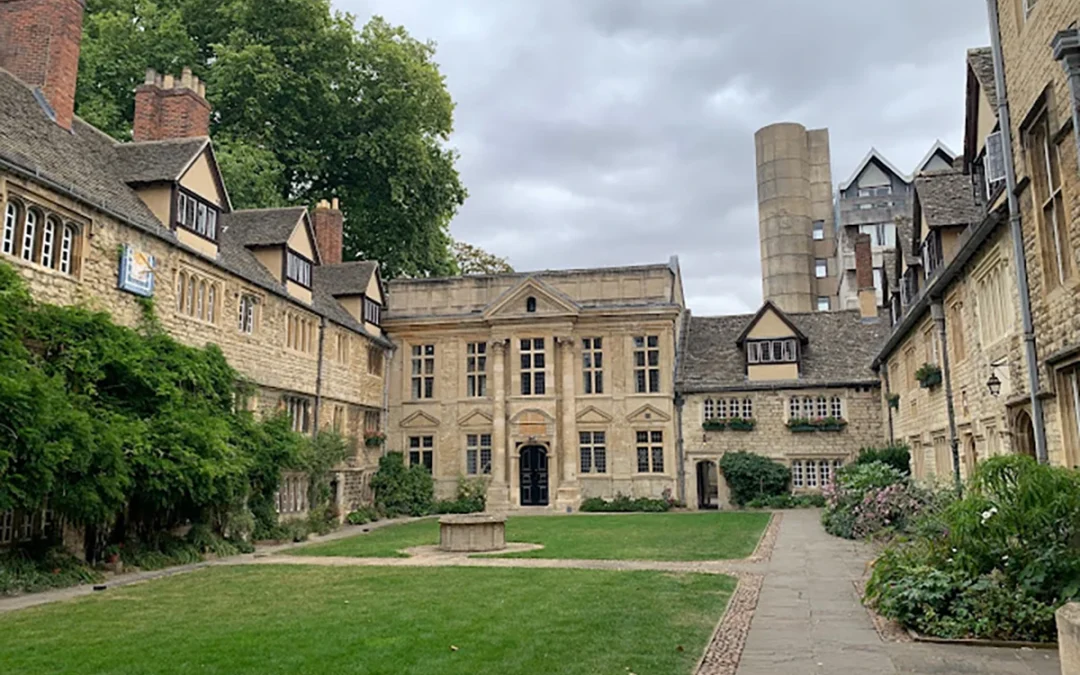Background / Objectives / Timeline
The University of Oxford approached Bojen in 2018 to undertake an investigation into how to light and power their new bespoke Plant Science Buildings. The Company would also have to provide the building with environmentally friendly lighting. Bojen were brought in because the original designers and contractors had massively over-engineered the project, but were unable to solve the problems that this unique building created; to provide power, then design and install energy efficient lighting & emergency lighting, lighting controls, climate control, ventilation & heating controls, Wi-Fi & high-speed data installation, door access, intruder and fire alarms. The building was behind schedule and still on the planning table because of the innovations that were going to be needed to complete the project.
Advance(s) Sought
To create a unique and cost effective lighting system for a bespoke building. Most of the rooms required individual controls and each had differing lighting requirements. This would take research and design to achieve the result within the tight budget set.
To design and develop a unique array of LED lighting that would significantly reduce energy costs and carbon emissions.
To combine with bespoke lighting controls to enable automatic dimming, zoning of light switching and daylight control to provide light levels as required for the fish, birds and insects to be housed within comfortable lighting levels and to comply with Home Office regulations.
To create bespoke, intelligent lighting controls to allow light levels to mimic tracking of sunrise and sunset throughout the whole year. This to be linked to a controlled heating & ventilation system that would allow climate control to be accurate to the exact requirements for each species in the building.
To both reduce running costs and comply with Home Office requirements. The previous contractor had been unable to solve the issue and it was considered to be one of the hardest to solve.
Technical Challenges
It was clear that a great deal of R&D would be required by Bojen – at their own expense – to develop homogenous systems that could be installed in each of the zones within very tight budgetary constraints.
The first challenge presented itself due to the fact that the client had only completed a basic performance specification based on generic installations, which did not in any way meet their vision of modern, efficient, and environmentally sustainable research facility.
This meant there were many elements of work which the Company needed to research and design if this vision was to be made a reality; including development, adaptation and use of cutting-edge technologies not normally considered for such uses.
As this was a design and build project, the building evolved over time with the Company attending many meetings with the design team, main contractor and client.
This meant that it was critical to have the relevant practical skills and technical experience on site to overcome issues as they materialised and also be prepared to look into a range of new and different technologies.
Bojen have many years of experience and are the trusted partner for the University of Oxford. The challenges are not readily deducible by a competent professional because of the unique design and electrical requirements that the building created. Other specific challenges included:
- The need for bespoke metering facilities for all separate areas, and the design of the building made this a most complex problem.
- There was a requirement for different types of controls to be able to house the equipment within the tight fittings. These had to be designed in conjunction with the lighting manufacturers and were therefore unique.
- Modifications of the existing lighting systems proved very tricky due to the existing installation and the existing containment the wiring was supported.
Resolution of Challenges, Project Outcomes and Future
Bojen were well placed to solve these issues because of their previous experience of solving such complex problems. By working closely with the architects and knowing and understanding the building’s complexities, they were able to undertake R&D at their research facility (mentioned above). This involved adaptations of existing components in discussion with manufacturers so that warranties would not be voided and that wiring regulations would be complied with. There were many “coordination” meetings with the University and specialist contractors to discuss the findings and implications of the R&D.
On-site R&D was undertaken to identify best solutions; practically, financially and from energy consumption viewpoints.
LED lighting strips were reverse engineered for optimal performance and changes were made in conjunction with the manufacturers to avoid voiding the warranty. These controls are industry firsts and do not exist anywhere else on the market.
Prototypes
No separate prototypes were constructed. However, the various system designs were linked together for alpha testing purposes, with improvements and adjustments made prior to final installation for field testing and release to the client. Direct costs include those linked to these activities and have been appropriately determined, as shown in the attached claim calculations.




